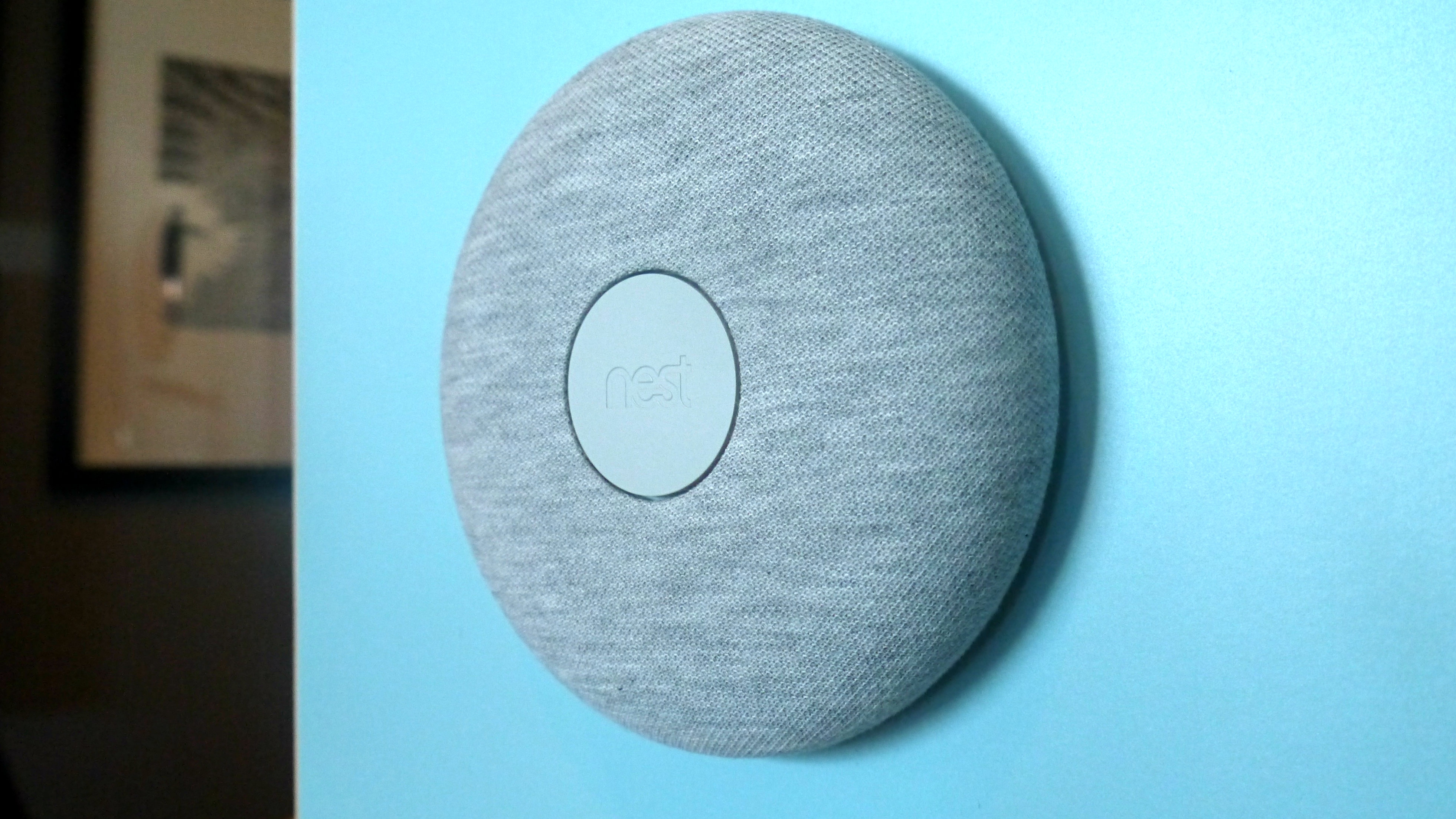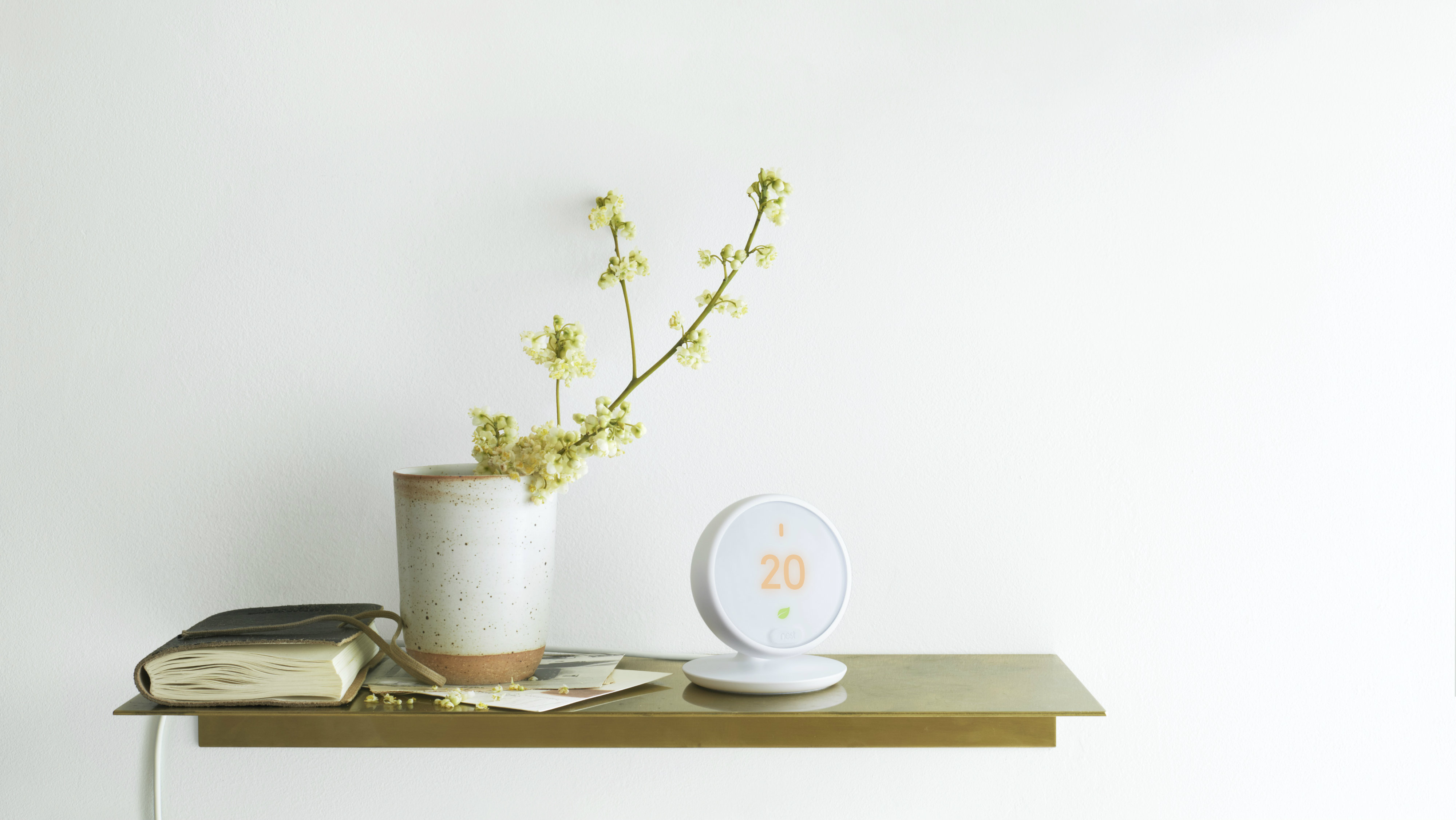First look: Nest Thermostat-E
Nest is turning up the heat

They keep you warm, save you money, and can even make your home look great, so it’s no wonder that smart thermostats are becoming an increasingly popular addition to the smart home.
Now, one of the smart home market leaders Nest has just launched its latest model, the Thermostat-E, in the UK. At £199, the Thermostat-E is considerably cheaper than previous models like the Nest Learning Thermostat, which comes in at around £300 when you factor in professional installation and accessories - the old models do looks a little more luxe however.
With the first shipments expected to reach customers by mid-October and, despite being available in the US for a number of months already, comes with cool UK-specific features, including ‘Heatlink’, which is Nest’s alternative to wired thermostats, and a predesigned heating schedule.
Design
There are two components to the Thermostat-E; the thermostat itself, and the wall mounted ‘Heatlink’, which acts as a replacement for traditional wired thermostats - both are designed to fit in seamlessly with any style of decor.
The thermostat itself looks a little like an alarm clock, with a modern-looking white casing and frosted display, which hides the temperature when not in use. As it’s not designed to be wall-mounted, the Thermostat-E can be placed on any surface in the home, and would look great on a desk or bedside table.
One downside to this design is that the Thermostat-E has to be plugged to the mains with a two metre long cable, so if you want to go completely wireless, this may not be the thermostat for you.
Hiding the temperature when the thermostat is not in use is a cool feature, and makes the the Thermostat-E even less intrusive, however the frosted display can be a bit difficult to read at times.
Sign up for breaking news, reviews, opinion, top tech deals, and more.

Nest was acquired by Google in 2014, and this is reflected in the design of the Heatlink element of the Thermostat-E, which uses the same grey fabric covering as the Google Home, making the Heatlink an attractive alternative to the traditional wired thermostat.
This means that the your thermostat could be an aesthetically pleasing addition to your home, rather than something you hide away in the boiler cupboard, which will appeal to the more design-conscious consumer.
Furthermore, you won’t need to hire a professional to install the Thermostat-E, with the Nest app walking you through the stages of installation - however it won’t work with more complex multi-stage heating and cooling systems, which is more suited to the Nest Learning Thermostat.
The Thermostat-E can either be controlled using the dedicated app, which connects to the device via your WiFi, or by using the thermostat directly - simply turn the white exterior ring left and right to turn the temperature up and down, and push the ring in to go to the setting menu, which we found was really easy to use.
In addition, if you have small children, you can turn on child lock to stop them from turning the heating up and down - a lifesaver for busy parents who don’t have time to be constantly monitoring their thermostat.

Features
One of the most exciting things about the Thermostat-E is that it learns your unique schedule over time, meaning that after a week of use, you no longer need to adjust the temperature manually. However, you don’t have to wait a week to use a pre-designed schedule - Nest took data from UK homes to create an average heating and cooling schedule, which should help you to save energy straight from the box.
The Thermostat-E contains four sensors that measure temperature and humidity, as well as occupancy, which uses infrared light that tells the machine if someone is home, plus an ambient light sensor so that the screen doesn’t appear too bright in a darkened room.
The occupancy sensor is particularly useful, as it automatically tells the thermostat to turn the heating down when nobody is home, which could end up saving you a fair amount of money in heating bills.

One issue that could arise from using a free-standing thermostat like the Thermostat-E is sunlight-based temperature discrepancies; for example, if the thermostat is sitting in direct sunlight all day, it may interpret the ambient temperature as being warmer than in actually is.
To combat this, Nest has ensured that the Thermostat-E understands the difference between heat from the sun and ambient temperature, which should make it extremely accurate in all seasons.
As the Thermostat-E is Google Assistant-enabled, you can ask it to turn the temperature up or down using a compatible smart speaker likes the Google Home, or the Polk Assist, adding another layer of ease to controlling your heating. This process would be even more seamless if Google Assistant was integrated into the Thermostat-E directly, negating the use for a third-party speaker, although we imagine this would come at a substantially higher cost.
Final thoughts
At a first glance, the Thermostat-E certainly looks the part, combining sleek design with intuitive machine learning to make heating your home a far easier and more attractive process.
Although the design is less luxurious than previous models, the Thermostat-E will probably appeal to a far wider audience and more decor styles than the pricier Nest Learning Thermostat.
At £199, it’s not exactly cheap in real terms, but compared to other models on the market the Thermostat-E is fairly inexpensive, particularly when you consider the money it could save you in energy bills.
With easy installation, a pre-designed heating schedule, and Google Assistant, the Thermostat-E could be a great addition to your home, whether you’re buying your first smart device, or making a new addition to your smart home setup.

Olivia was previously TechRadar's Senior Editor - Home Entertainment, covering everything from headphones to TVs. Based in London, she's a popular music graduate who worked in the music industry before finding her calling in journalism. She's previously been interviewed on BBC Radio 5 Live on the subject of multi-room audio, chaired panel discussions on diversity in music festival lineups, and her bylines include T3, Stereoboard, What to Watch, Top Ten Reviews, Creative Bloq, and Croco Magazine. Olivia now has a career in PR.